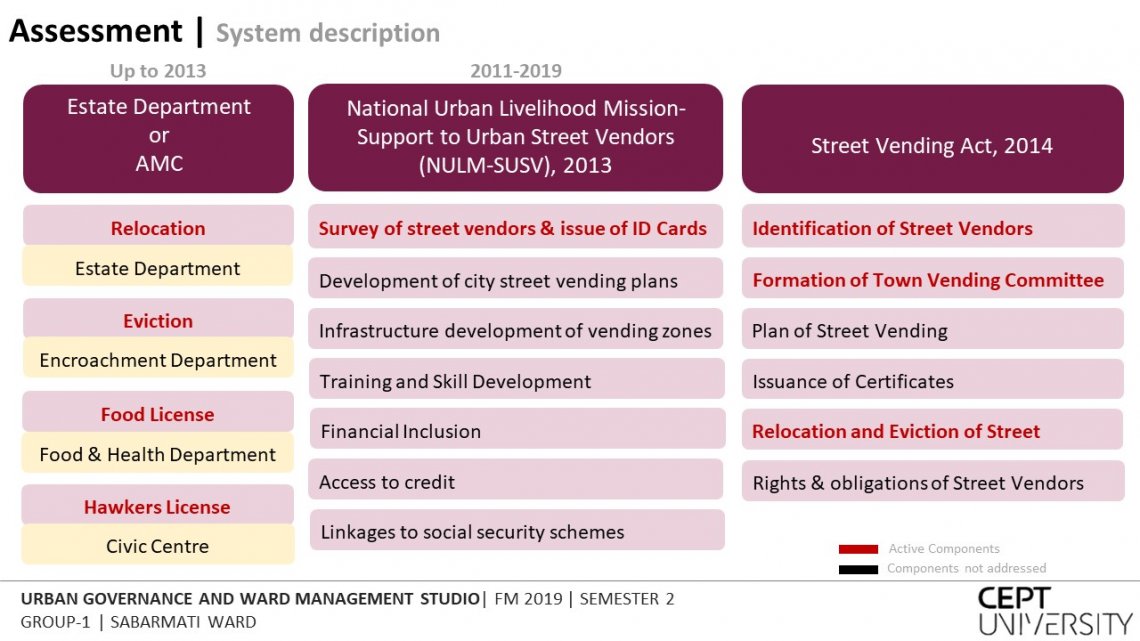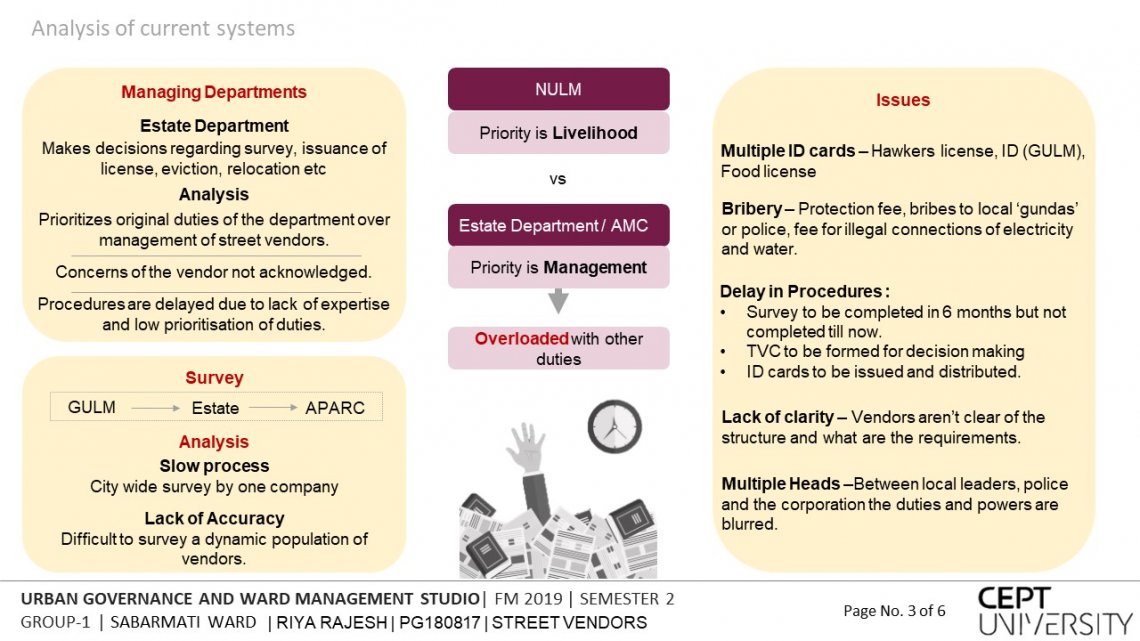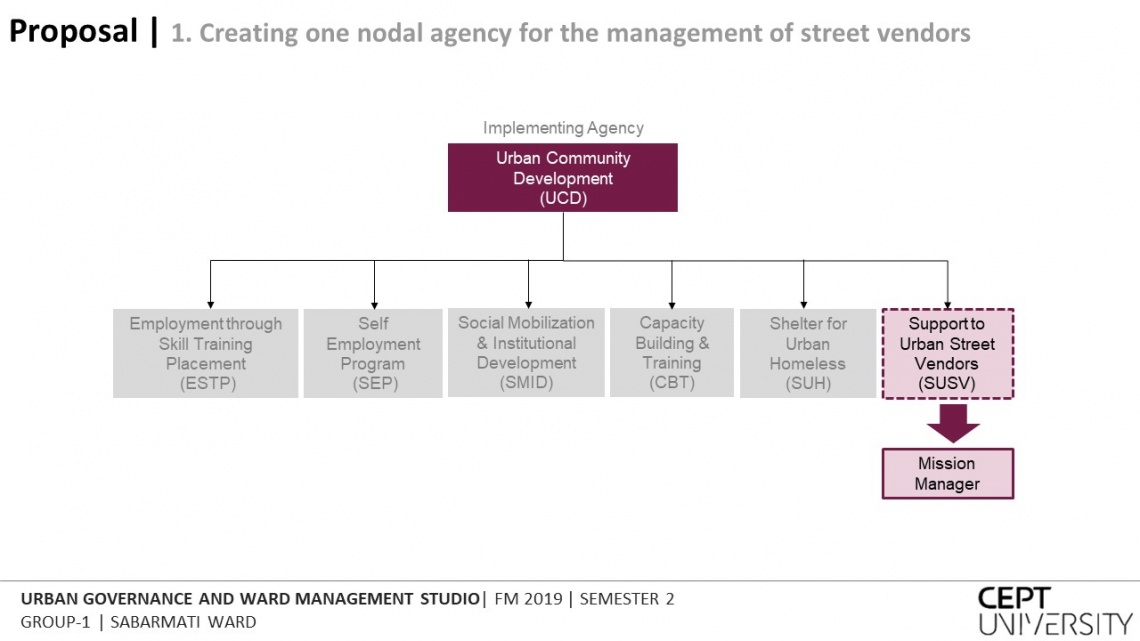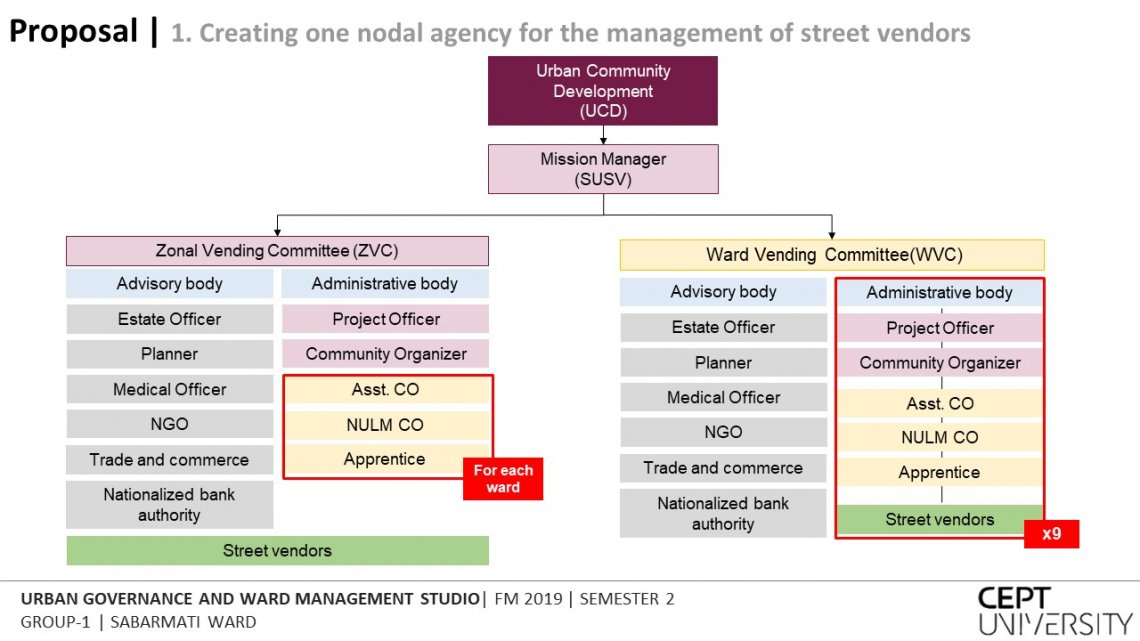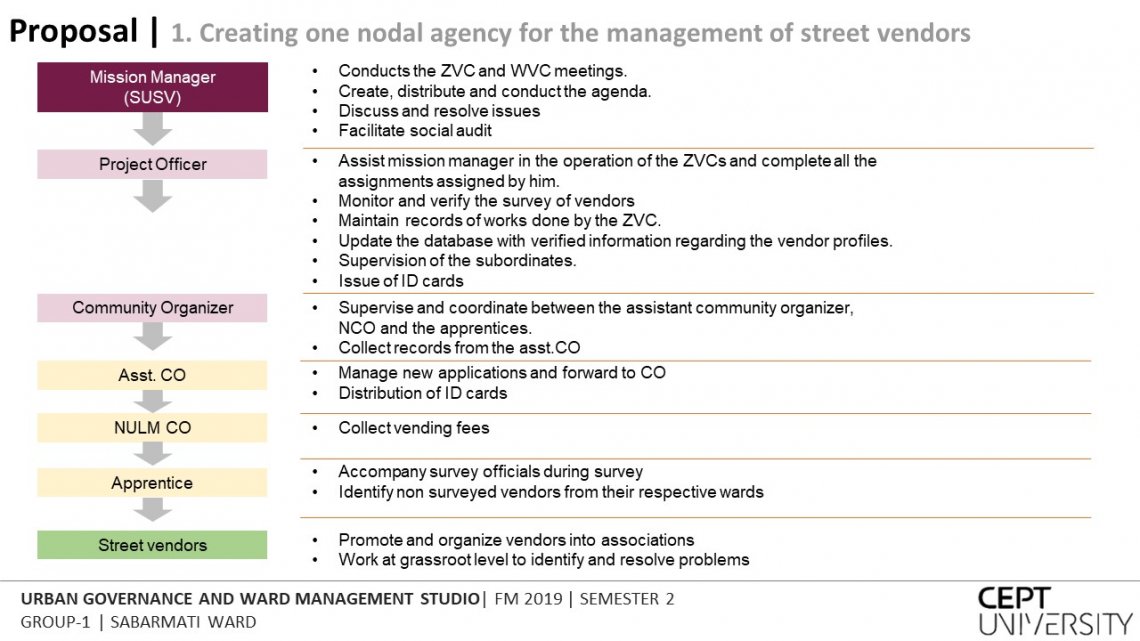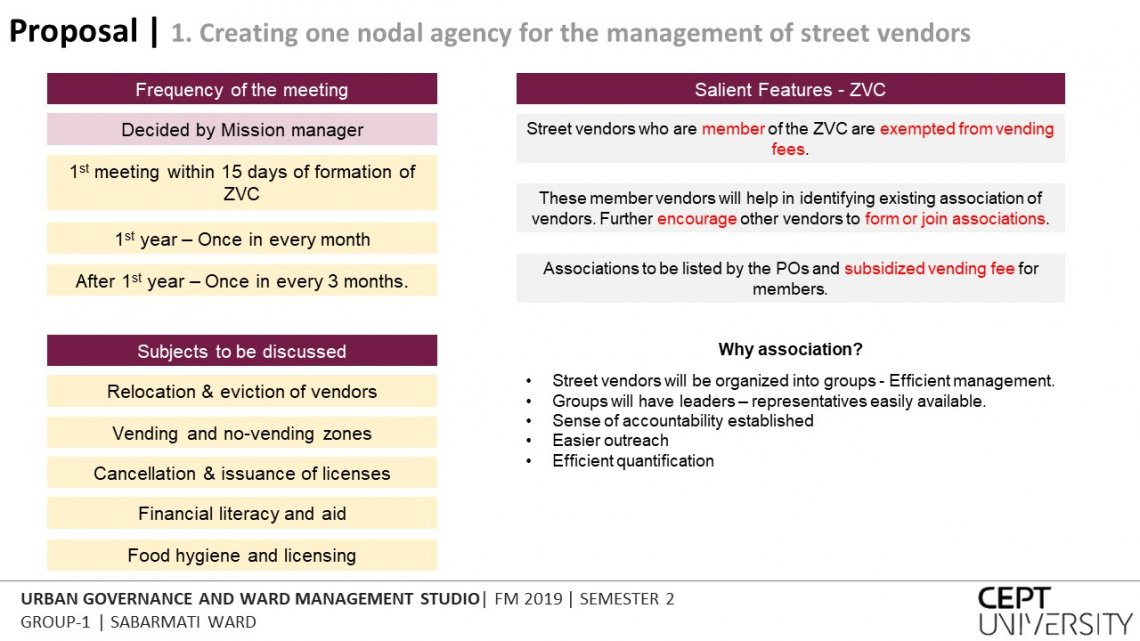Your browser is out-of-date!
For a richer surfing experience on our website, please update your browser. Update my browser now!
For a richer surfing experience on our website, please update your browser. Update my browser now!
The studio required understanding the dynamics of the city through the study of a selected ward (Sabarmati). Street vendors form a part of the urban landscape and their management becomes an essential part of urban management. Street vendors are constantly contesting for space on the streets and their numbers are infinitely growing as street vending provides an easy form of employment to the unskilled and uneducated populace.In this project, the main focus was to understand the administration of street vendors in the city. After the initial study, gaps in the current system were identified and potential interventions suggested.
